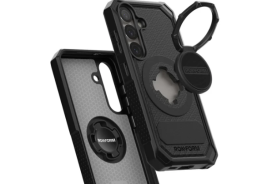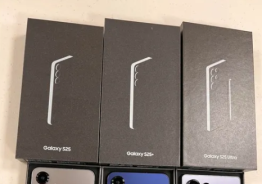Rumors that Apple will be integrating in-cell technology in its next-generation iPhone first surfaced back in April via Digitimes. Now, however, such rumors have taken a significant boost after the well-respected Wall Street Journal reported the same thing, citing "people familiar with the matter." What's more, Verizon is hinting a fall debut of the world's first smartphone with the in-cell technology.
According to the Journal, the iPhone 5 is currently being manufactured by Asian component makers, and will indeed use in-cell technology to make the smartphone's display thinner, in an effort to better compete with Samsung and other rivals.
Sources told the WSJ that Japanese liquid-crystal-display makers Sharp Corp. and Japan Display Inc., which combines three Japanese electronics makers' display units into one single company, together with South Korea's LG Display Co., are currently mass producing panels for the next-generation iPhone using so-called in-cell technology.
How It Works
This new technology integrates touch sensors into the LCD, eliminating the need for a separate touch layer, usually about half-a-millimeter thick. Eliminating this layer makes the entire display thinner, and also improves the quality of the images being displayed, DisplaySearch analyst Hiroshi Hayase told the Journal. According to Apple's official Web site, the current iPhone 4S is 9.3 millimeters thick.
The new technology would not only help Apple create thinner devices, but it would also simplify the supply chain, as well as help reduce costs by eliminating the need to buy touch panels and LCD panels from different suppliers. Moreover, numerous reports indicate the new iPhone will sport a larger display than the current iPhones' 3.5-inch screens. A larger size would also mean an increase in weight, but a thinner screen could help offset that increase.
A thinner screen in the next-generation iPhone could make the whole handset slimmer, or leave extra real estate for other components such as batteries. In-cell touch displays, however, are more difficult to manufacture than conventional LCD screens. According to the Journal's sources, the manufacturing process is more challenging and time-consuming for LCD makers as they strive to achieve high yield rates. The new iPhone is expected sometime in the fall, but nothing is official yet.
The LCD industry has been working on in-cell touch technology for several years now, and Apple's iPhone provides the perfect environment for LCD panel makers such as Sharp, Japan Display and LG Display to demonstrate their latest progress and prove that LCD screens can continue to evolve and compete with OLED displays. Meanwhile, the three components manufacturers have also been developing OLED displays.
On the other hand, the adoption of in-cell technology will affect manufacturers of the conventional touch panels currently found in many smartphone displays. According to the Journal's sources, Taiwan's Wintek Corp. and TPK Holding Co., which supplied the touch-panel layer for the iPhone 4S screen, did not get orders for the next-generation iPhone.
Verizon Hints Fall Debut
Meanwhile, Verizon is hinting that 2012's most anticipated smartphone could debut in the fourth quarter.
During the company's quarterly conference call, Verizon CFO Fran Shammo said, "There is always that Rumour Mill out there with a new phone coming out in the fourth quarter. And so people may be waiting" when asked by an analyst why Verizon's customers were holding back from upgrading their handsets. It's a vague reference to the iPhone, no doubt, but we would be surprised if Shammo had any other device in his mind or was alluding to any other smartphone rumor.
© Copyright 2026 Mobile & Apps, All rights reserved. Do not reproduce without permission.












